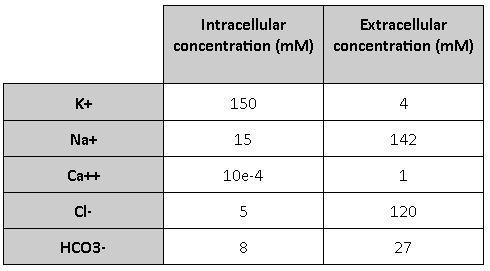The correct answer is A.
First things first, let’s review what neurons are and their structure.
A neuron is a cell that can be excited by electricity. Based on the neuron’s function, we can identify 2 types :
-
sensory neurons : they respond to stimuli such as light or touch. The sensory information that they perceive is then sent to the brain and spinal cord.
-
motor neurons : as opposed to sensory neurons, they receive motor information from the brain and spinal cord. Like their name suggests, they induce a motor response, such as muscle contraction.
A neuron is made up of the following components :
- The soma is the cell body
- The dendrites receive the messages from other cells
- the axon passes the message from the cell body to the terminal junctions. It is encapsulated inside a myelin sheath, which helps speed up neural impulses.
- The terminal buttons form junctions with another cell’s dendrites. It contains the synapses, which is the structure that enables the transmission of electric and chemical signals.
In other words, the signal arrives at the dendrite of the neuron A, then soma, axon, terminal buttons and then the dendrite of the neuron B and so on.
Now, what is an action and resting potential ?
It is the difference of electric potential between the 2 sides, outer and inner sides, of the cell membrane. Such electrical difference exists due to the difference of concentration of ions on either side of the membrane.
At the resting state, the resting potential is negative (-70 mV) : the inside of the cell is negatively charged compared to the outside of the cell.
The ions responsible for the resting potential are : K+, Na+, Ca ++, Cl- and HCO3-.

An action potential is the inversion of the polarity of the cell membrane. It can be divided into different phases :
-
depolarisation : Na+ channels open and let Na+ molecules inside the cell, making it less negative.
-
repolarisation : K+ channels open and let the K+ ions outside of the cell, making the inside of the cell negatively charged again
-
hyperpolarisation : K+ channels are still open while Na+ channels are closed. This makes the inside of the cell more negatively charged than it was in the resting state.
To get back to the resting state, the ions move in the opposite direction and therefore need different types of transport mechanisms :
-
Active transport is the movement of a molecule through the cell membrane against its concentration gradient. Like the name suggests, it uses energy, as opposed to passive transport which doesn’t.
-
Facilitated diffusion is, as opposed to active transport, a passive and spontaneous movement of a molecule through the cell membrane.
Both of these elements are key factors that ensure the establishment of the resting state.
On another note, cell respiration refers to the different metabolic reactions that leads to the formation of ATP (adenosine triphosphate), an energetic molecule. The ATP made by the mitochondria diffuses inside the neurons to maintain adequate energy levels for synaptic transmission.
Therefore, cell respiration is also found during the establishment of a resting potential.
